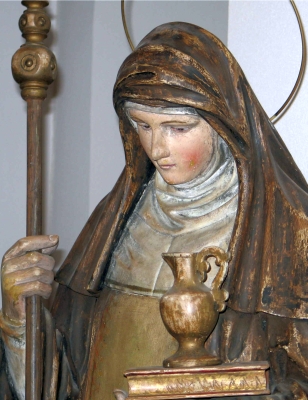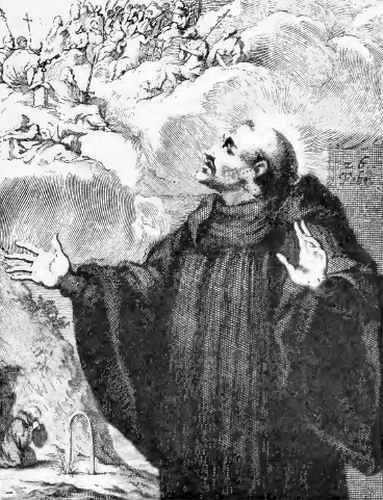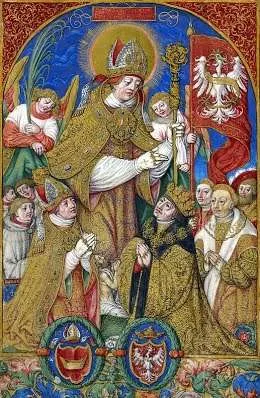Profile
Walburga was the daughter of Saint Richard the King. She was the sister of Saint Willibald and Saint Winebald. She was a student of Saint Tatta at Wimborne monastery, Dorset, England, where she later became a nun.
Beginning in 748, she evangelized and healed pagans in what is now Germany, with Saint Lioba, Saint Boniface, and her brothers. She was the abbess of communities of men and of women at Heidenheim. Cures are ascribed to the oil that exudes from a rock on which her relics were placed, which together with her healing skills in life explains her patronage of plague, rabies, coughs, etc.
The night of May 1, the date of the translation of Walburga’s relics to Eichstätt in 870, is known as Walpurgisnacht; it is also a pagan festival marking the beginning of summer and the revels of witches. Though the saint had no connection with this festival, her name became associated with witchcraft and country superstitions because of the date. It is possible that the protection of crops ascribed to her, represented by three ears of corn in her icons, may have been transferred to her from Mother Earth and the connection to this pagan holiday.
Born
- c.710 at Devonshire, Wessex, England
Died
- 25 February 779 at Heidenheim, Swabia, Germany of natural causes
Canonized
- by Pope Adrian II
Patronage
- against coughs
- against dog bites
- against famine
- against hydrophobia
- against mad dogs
- against plague
- against rabies
- against storms
- boatmen
- farmers
- harvests
- mariners
- peasants
- sailors
- watermen
- in Belgium
– Antwerp
– Oudenarde - in England
– Plymouth, diocese of
– Wimborne - in Germany
– Eichstätt, city of
– Eichstätt, diocese of - in the Netherlands
– Gronigen
– ZutphenRepresentation
- abbess holding three ears of corn
- abbess with angels holding a crown over her
- abbess within a family tree of the kings of England
- crown
near her own tomb as it exudes its miraculous oil - phial of oil
- royal abbess with a small flask of oil on a book
- scepter
- three ears of corn
- with Saint Willibald and Saint Winebald
Source: https://catholicsaints.info/saint-walburga/







